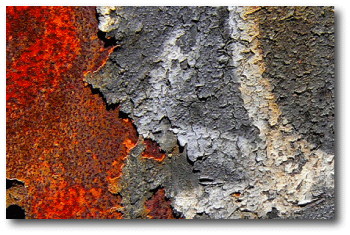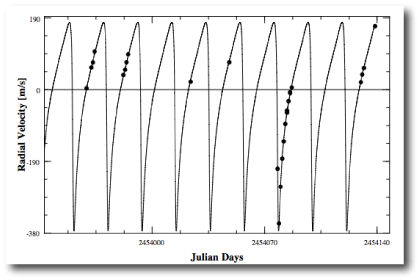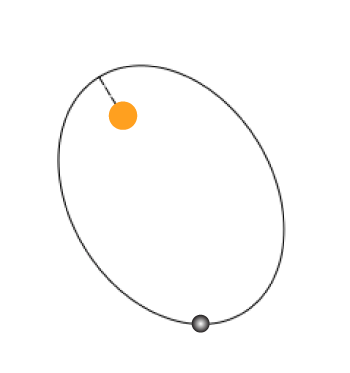
Image Source.
Eugenio has finished combing through this summer’s literature, and has added twenty newly published radial velocity data sets to both the systemic backend and to the current version of the downloadable systemic console. As a result of his efforts, new or augmented data is now available for the following stars: Cha Ha 8, GJ 317, HD3651, HD5319, HD11506, HD17156, HD37605, HD43691, HD75898, HD80606, HD89744, HD125612, HD132406, HD170469, HD171028, HD231701, NGC2423, NGC4349, HAT-P-3, and TrES-4. As always, the published literature citations for the velocities are contained in the “vels_list.txt” file that comes bundled with the systemic console download. The vels_list.txt file can be indispensible if you want to publish results that use the systemic package as a research tool — indeed, we’re quite excited that researchers are starting to adopt the console in the course of carrying out state-of-the-art research (see, e.g. here.)
There’s quite a bit to explore with these new data sets. Eugenio has had a first look, and included in his recommendations are:
GJ 317: This system (discovered by John Johnson and the California-Carnegie planet search team, preprint here) is only the third red dwarf that’s been found to harbor a Jovian-mass companion. The data shows clear evidence for one planet “b”, with at least 1.2 Jupiter masses and a 693-day orbit, and there’s a strong hint of a second planet in the radial velocity variations. Check it out with the console!
HD 17156: This data comes from a recent paper by the California-Carnegie team. There are radial velocities from both the Keck and the Subaru telescopes, and the signal-to-noise of the orbit is very high.

The data show a ~3 Jupiter-mass planet on a 21.2 day orbit. The orbit is remarkably eccentric for a planet on such a short period, leading to a 25-fold variation in the amount of light received during each trip around the star.

It’ll be interesting to get a weather forecast for this world, and it’s also important to point out that the orientation of the orbit is very well suited for the possibility of observing transits. Periastron is reasonably close to being aligned with the line of sight to Earth, leading to an a-priori transit probability of more than 10%. In the discovery paper, a preliminary transit search is reported, but only about 1/4th of the transit window was ruled out. With a Dec of +71 degrees and a nice situation in the winter sky, this is definitely one for Transitesearch.org’s Finland contingent.

Why the “leet”? Why?
Out of interest, how is the transit probability calculated?
Hi Greg,
I think that is so cool that researchers are using the same console as we. :^)
Best,
Eric
Pingback: systemic - HD 17156 b
Pingback: systemic - Tonight’s the Night